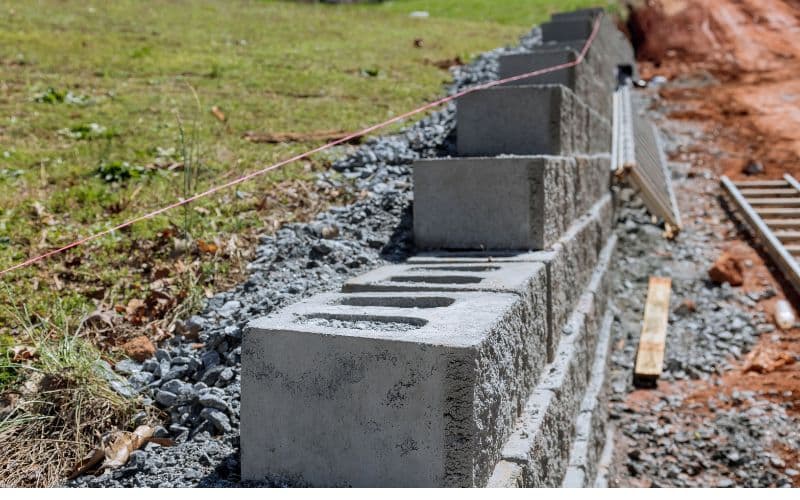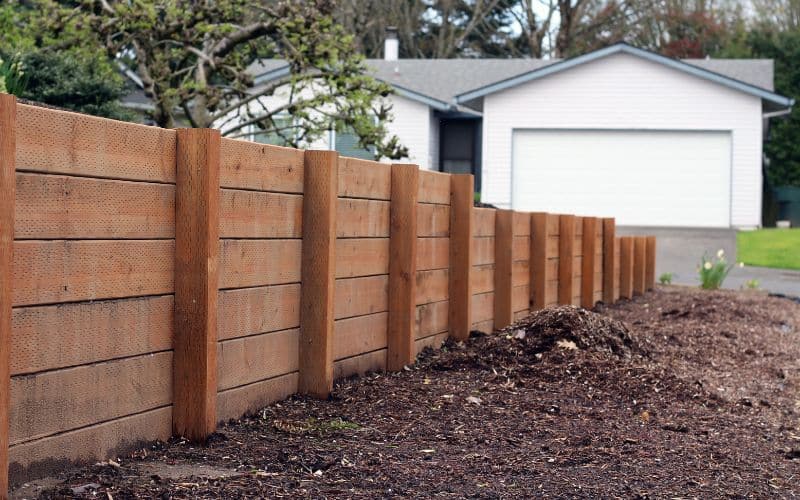
The High Stakes of Retaining Wall Ownership
Picture this: a towering retaining wall gracing your yard, holding back the earth like a sentinel. It’s not just a functional marvel; it’s a conversation starter—or shall we say, a debate igniter? From property lines to repair costs, retaining walls come with their own set of puzzles. If you’ve found yourself scratching your head over who’s responsible for this architectural wonder, you’re in good company. Let’s unravel the complexities of retaining wall ownership and responsibilities, shall we?
What is a Boundary Retaining Wall and Why Does it Matter?
A boundary retaining wall is more than just a pile of bricks or stones; it’s a structure that holds back soil and prevents it from collapsing into another property. It’s crucial for managing water flow, preventing soil erosion, and even adding aesthetic value to your property. But when it comes to determining who’s responsible for it, things can get a bit murky.
Who Holds the Deed? Understanding Property Line Nuances
So, you’ve got a retaining wall, but where exactly does it stand in relation to your property line? This isn’t just a question for idle curiosity; it’s the cornerstone of responsibility. If that wall is fully within your property boundaries, then congratulations, you’ve just inherited full responsibility for its maintenance. On the flip side, if the wall straddles your property line like a gymnast on a balance beam, you and your neighbor are in this together. To clear up any ambiguity, consider bringing in a surveyor. They’re like the referees of property disputes, helping you pinpoint the exact lay of the land.

How Much Does a Retaining Wall Cost in Ontario?
When it comes to retaining walls, costs can swing as wildly as Ontario weather. But let’s break it down a bit further, shall we? The cost isn’t just about the materials—stone, concrete, or timber—it’s also about the labor involved, the engineering required, and even the permits you might need.
Material Costs
Different materials come with different price tags. For instance, natural stone is often more expensive than concrete blocks. Timber, while rustic and beautiful, may require additional treatments to prevent rot, adding to the overall cost.
Labor and Installation
Don’t underestimate the cost of skilled labor. Building a retaining wall isn’t a weekend DIY project; it often requires professionals who know how to properly engineer the wall to withstand soil pressure and drainage issues. Labor costs can sometimes even surpass material costs, especially for complex or tall walls.
Engineering and Permits
Depending on the height and location of your retaining wall, you may need to consult an engineer. In Ontario, walls over a certain height may require a building permit, and for that, you’ll need an engineered plan. These plans and permits aren’t free and can add a significant amount to your project’s bottom line.
Additional Costs
Don’t forget about the extras like drainage pipes, soil, or even decorative features like lighting. These can add up and should be factored into your budget.
Financing the Wall
In Ontario, the cost of a retaining wall can range from a few hundred dollars for a simple, low wall to several thousand for a high, engineered structure. Knowing who’s responsible for these costs before you start digging is crucial. If the wall benefits both you and your neighbor, it might be worth discussing a shared financial responsibility.
So, before you pick up that shovel or sign a contract, make sure you’ve considered all the financial angles. Knowing who’s footing the bill before you break ground isn’t just good manners; it’s financial prudence at its finest.
Who is Financially Responsible for a Collapsing Retaining Wall?
What Happens When a Retaining Wall Crosses Property Lines?
If a retaining wall extends beyond your property line and into your neighbor’s yard, both of you share the responsibility for its maintenance and any repair costs. This isn’t just a handshake agreement; it’s a legal obligation for both parties.
The Surveyor’s Role
To get a clear picture of who owns what, a professional surveyor can be hired to map out the exact boundaries. They’ll measure the wall and your property line, providing a detailed report that shows what portion of the wall is on each property. This information is crucial for determining how costs should be split.
Why This Matters
Knowing the exact boundaries helps in negotiating the division of repair costs and maintenance duties. It can prevent disputes and ensure that both parties are contributing fairly to the wall’s upkeep.
Documentation
Once you have the surveyor’s report, it’s a good idea to keep it on file for future reference. This can be particularly useful if property ownership changes, as it provides a documented history of agreed-upon responsibilities.
So, if your retaining wall straddles property lines, remember that teamwork makes the dream work—or at least keeps the wall standing strong.
Is the Rear Yard Retaining Wall Your Responsibility?
If the retaining wall is in the rear yard and entirely on your property, then yes, it’s your responsibility. However, if it was originally built to support both properties, then the responsibility—and the cost of any repairs—may be shared.

Ontario Laws and Regulations: What Do They Say?
In Ontario, understanding the laws around fences and retaining walls is more than just useful information; it’s a necessity for homeowners. These guidelines not only help you figure out who is responsible for what but also indicate when you need a permit for repairs or new construction. Failing to adhere to these rules could lead to legal complications and strained neighbor relations. Before you start any work, it’s crucial to check if a permit is required, especially for significant repairs or if the wall meets certain specifications. Your local municipal office is an excellent resource for this information, and you can also find guidelines on various Ontario government websites. So, before diving into your next retaining wall project, arm yourself with the right legal know-how. It’s the cornerstone of both sturdy construction and neighborhood harmony.
Expert Advice: How to Approach Shared Ownership
If you find yourself in a situation where the retaining wall is a shared responsibility, it’s best to approach the other property owner diplomatically. Discuss the situation and come to an agreement on how to proceed with any repairs or maintenance. If an agreement can’t be reached, legal advice may be necessary.
Preventing Collapse: Maintenance Tips for Your Retaining Wall
They say an ounce of prevention is worth a pound of cure, and when it comes to retaining walls, this adage rings true. Make it a habit to routinely check your wall for any red flags that signal trouble. Keep an eye out for cracks that could widen over time, bricks that have become loose, or any soil erosion happening behind the wall. Addressing these issues promptly not only averts a potential collapse but also spares you from shelling out big bucks for extensive repairs later. So, roll up those sleeves and give your retaining wall the TLC it deserves.
Conclusion: Your Yard, Your Wall, Your Responsibility?
So, who’s really responsible for that high retaining wall in your Ontario yard? The answer isn’t always straightforward. It depends on various factors like the location of the wall, who originally built it, and what kind of support it provides. But one thing’s for sure: retaining walls are more than just a backdrop for your garden; they’re a crucial part of your property that requires attention and care.








